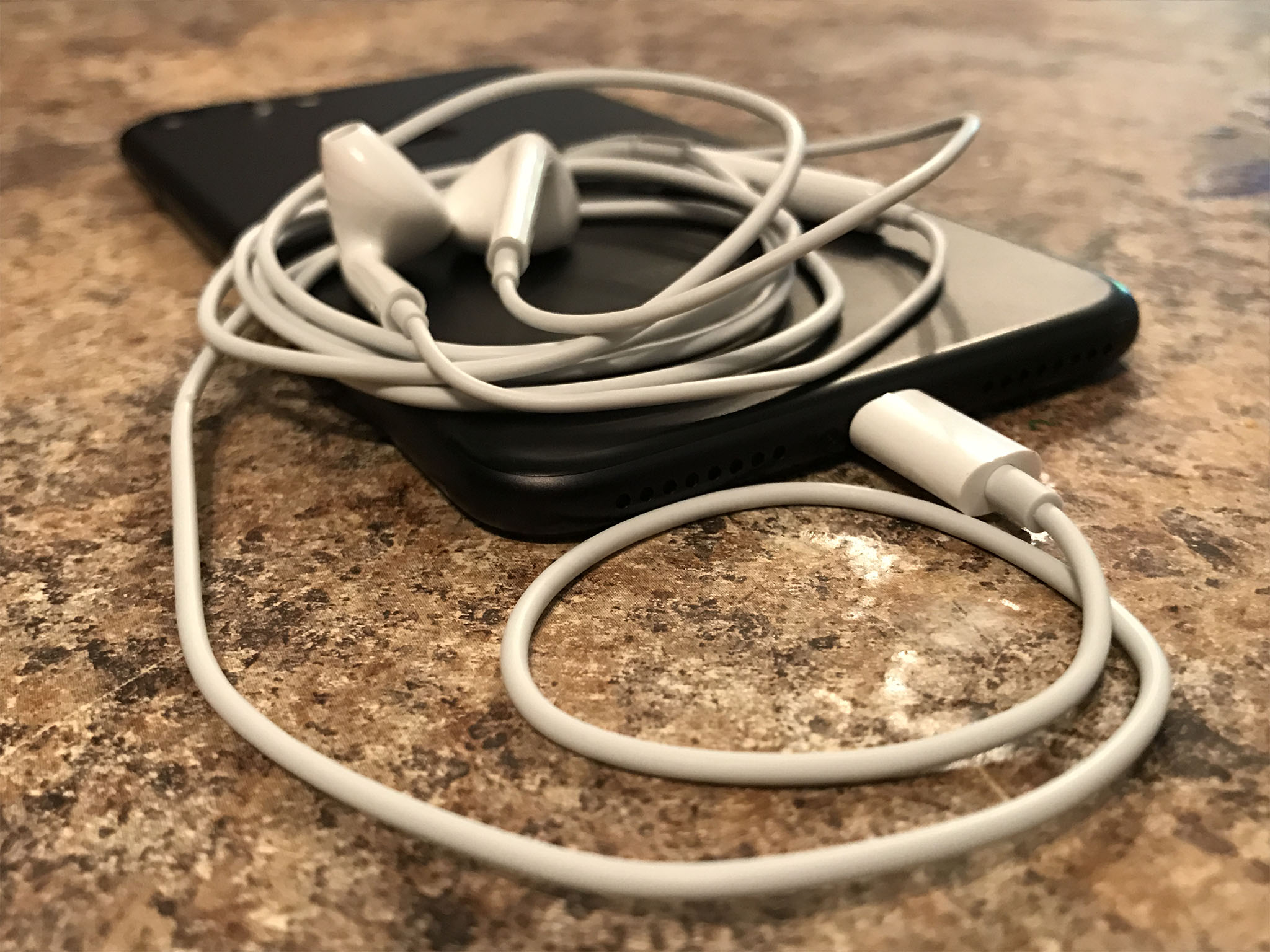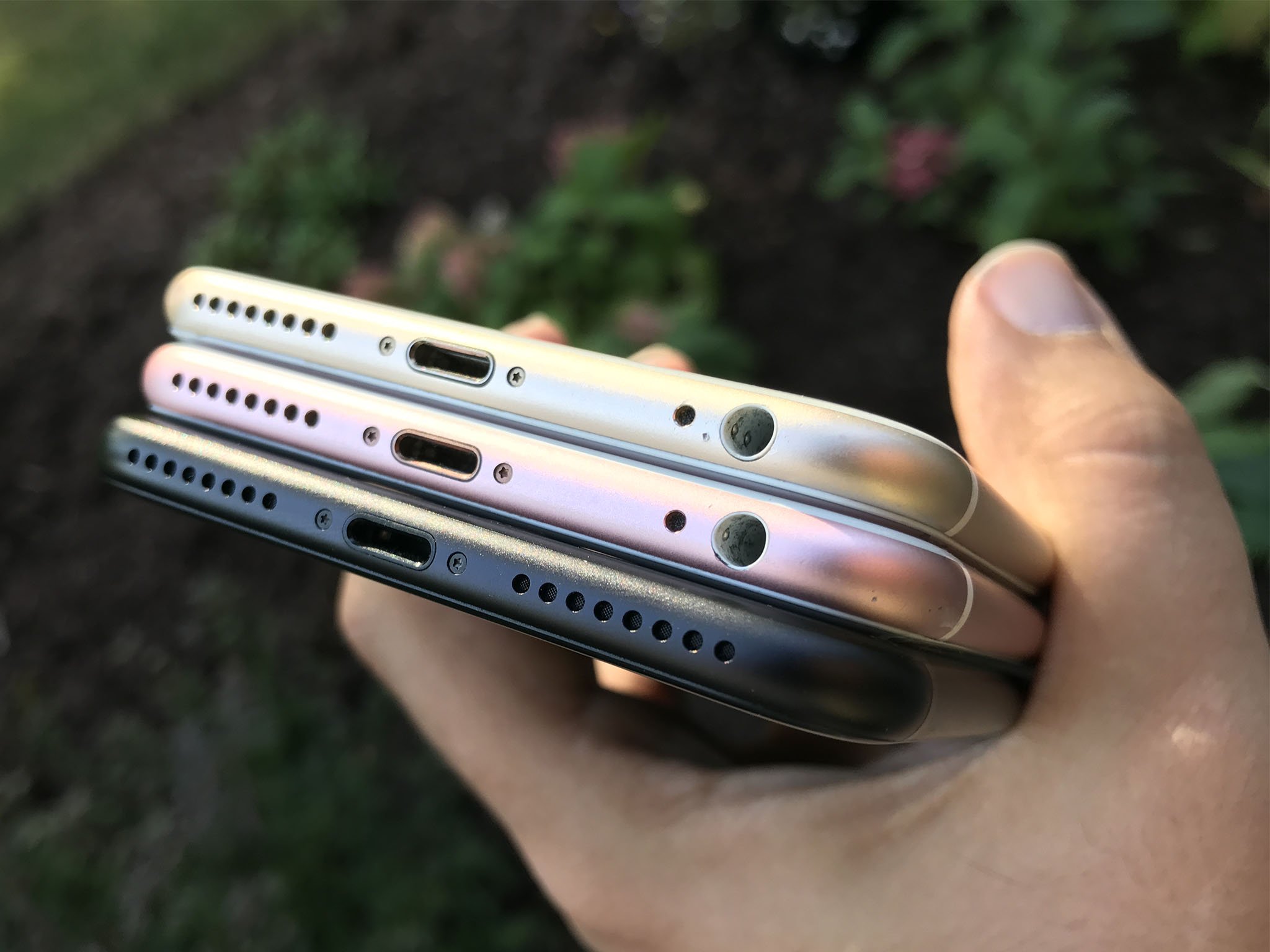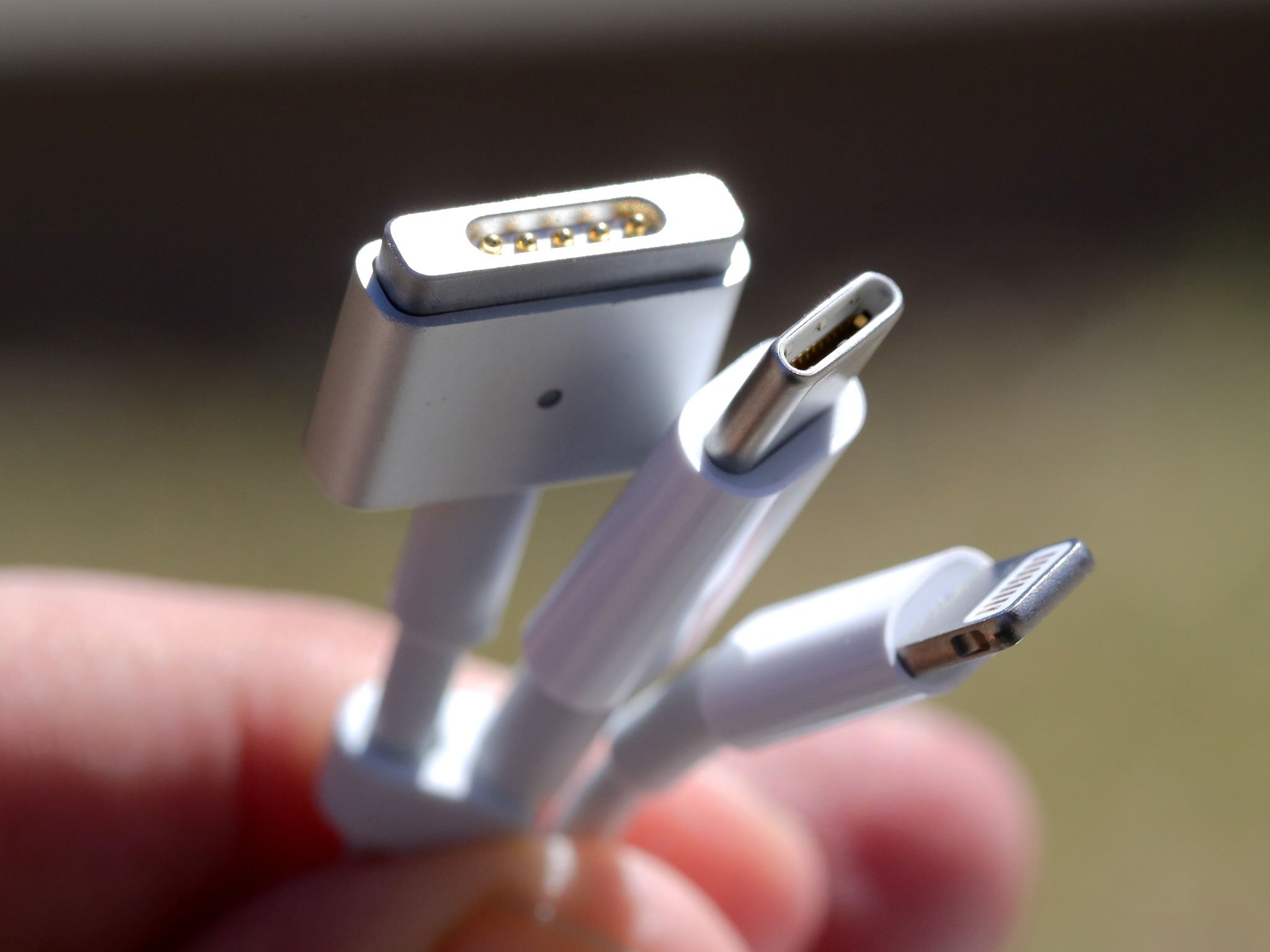Why would Apple switch iPhone 8 from Lightning to USB-C?

iPhone 8, or whatever Apple decides to call the "10th Anniversary iPhone", has been rumored to contain all sorts of advanced technology, from distance charging to face and iris scanning. One of the most consistent has been a switch from LCD to OLED display technology. Not so common, a switch from Lightning to USB-C connector.
Takashi Mochizuki, writing for the Wall Street Journal:
People familiar with Apple's plans said the iPhone releases this year would include two models with the traditional LCD and a third one with an OLED screen.
Both Apple Watch and MacBook Pro with Touch Bar use OLED (organic light-emitting diodes) display technology. Like any technology, it's all about finding the right balance, maximizing the advantages, and mitigating the drawbacks as best as you can.
With OLED, advantages include thinness, because it doesn't require a separate backlight layer the way LCD does, and power efficiency, since the whole screen doesn't have to be lit up, only the specific, individual pixels being used. It's also flexible, so it can curve around edges and not just to them.
Meanwhile, some of the drawbacks have been mitigated, including subpixel arrangement at larger sizes, specific subpixel lifespans, color saturation, and burn-in. Yield is still a challenge, especially at the hundreds of millions of units iPhone ships every year.
But, using OLED on a specific, higher-end iPhone would let Apple not only differentiate it, but do so in a way that also lets them meet demand.
They said Apple would introduce other updates including a USB-C port for the power cord and other peripheral devices, instead of the company's original Lightning connector. The models would also do away with a physical home button, they said. Those updates would give the iPhone features already available on other smartphones.
Let's assume that, when feeling around in the dark, the WSJ didn't simply mistake the elephant's trunk for a snake — that Apple is switching the other end of the iPhone charging cable from USB-A to USB-C and keeping Lightning for the on-device port. Let's assume what they heard and vetted is a real plan to switch the actual port on the iPhone from Lightning to USB-C. What does that mean?
iMore offers spot-on advice and guidance from our team of experts, with decades of Apple device experience to lean on. Learn more with iMore!
Feature sets, not chipsets
Apple was an early adopter of USB-C on the 12-inch MacBook introduced in 2015. They chose not to wait for it on iPhone, though, introducing their own, smaller, Lightning connector on iPhone 5 in 2012. USB-C was nowhere near ready and Apple couldn't have made iPhone 5 the way they wanted to if they'd stuck to then 10-year old 30-pin iPod Dock connector.

As I wrote in my Lightning vs. USB-C explainer, though:
The Lightning team at Apple helped build USB-C, which is why there are so many similarities and why Apple has gone all-in on it for the Mac. Whenever, if ever, it makes sense — and is worth the transition cost — for iPhone and/or iPad, we'll see Apple go all-in on it there as well.
Lightning and USB-C are implementation details. The tech community loves to talk about chipsets but Apple focuses on selling feature sets. For example, there's no real NFC on iPhone. There's Apple Pay which just happens to use NFC under the covers.
So, when thinking about Apple transitioning from Lightning to USB-C — which would delight the part of its market that really wants the industry to settle on a single, cross-compatible connector, and infuriate the part of its market that's still angry over losing Dock and in no way wants to buy new cables, dongles, and accessories again — the most important questions is why?
Apple made the switch from Dock to Lightning just five years ago. Apple made the switch from 3.5 mm headphone jack to Lightning just last year. Though historically fearless when it comes to sacrificing the past for the future, what feature set (not chipset) would be compelling enough for Apple to put their customers, partners, and themselves through another transition?
When and if Apple senior vice president of marketing, Phil Schiller, takes to a keynote stage to announce the change, what case for USB-C would he make?
Lightning vs. USB-C: Analyst reactions
To help put some context around the idea of a Lightning to USB-C transition, I asked some industry analysts in the Apple space for their quick, first reactions:
Jan Dawson of Jackdaw Research:
I'd say that between wireless for headphones and potential wireless charging, the port will just become a lot less important over the next few years. So, at some point, it doesn't matter all that much what technology that port uses.There would be a certain symmetry, too, in abandoning the Lightning port after five years, just as Apple abandoned the old 30-pin connector after the first five years of the iPhone.Apple clearly isn't wedded to particular ports or technologies for nostalgic or other reasons, and is willing to make changes where the upside outweighs the downside.Some standardization around USB-C would be a good thing over the long term, even if it's painful in the short term.Having said all that, there's no guarantee that this change will be made this fall. Though there's some logic to making a change like this alongside a big change in form factor and the introduction of wireless charging, you could also argue that there are going to be enough changes without adding this too.
Ben Bajarin of Creative Strategies:
Expanding to USB-C makes sense if there are things in the roadmap where they need more bandwidth from the port that they can't get with lightening. Something like AR or VR comes to mind where you would need to send large high resolutions files over the port to the headset or glasses.Of course, Lightning to USB-C on the charger end is a simpler explanation.
Carolina Milanesi, also of Creative Strategies:
I think it would make sense considering it's on the Mac and might also be what other devices will use. For example, devices that Apple might not make directly but could fit into the connected home ecosystem or the car.
AR (augmented reality) being a popular theory and something Apple CEO Tim Cook has gone out of his way to mention an interest in several times already, I also asked Mobile Nations' own resident VR/AR expert for his thoughts.
Russell Holly of VRHeads:
USB-C supports the full 10Gbps bandwidth of USB 3.1, which current iPhones and the Lightning cables that power them don't currently offer. If Apple were working on an Augmented Reality peripheral that was feeding real-time data from multiple cameras to the phone, fully utilizing USB 3.1 would be a priority.
iPad Pro 12.9, with the proper adapter, can hit USB 3.0 and 5Gbps, by way of comparison. So, while the world moves wireless for things like charging and audio, video continues to go the other way — not staying the same size so it can beam, but growing with the pipes by adding resolution, color depth, data layers, and dimensionality.
iMore's analyst-in-residence, Michael Gartenberg:
USB-C allows Apple to unify their products into one cohesive set of connectors. Apple has been working towards going with standards, not proprietary connectors.I think we'll only see that transition on one high-end model, though, before the full switchover will happen.
But, but, licensing fees!
One of the knocks on a switch from Lightning to USB-C is that Apple would never willingly give up Made For iPhone (MFi) licensing fees. For anyone wondering about that, please allow me to introduce you to iPhone profits.

While MFi no doubt appears on a spreadsheet buried somewhere in "Other", it's blotted out like a Kyrptonian eclipse by iPhone, and Apple's interest in it by their interest in introducing new features to sell even more iPhones. In other words, its job security is only slightly better than MagSafe's was on the Mac.
Lightning and licensing were always more about control of their own destiny anyway. Apple could do what they wanted with it, when they wanted, without waiting for any external standards body to agree or to ship, and they could hold partner companies to quality control and compatibility levels Apple found acceptable.
Whether or not those dynamics and Apple's priorities around them have changed, we'll have to wait and see. And to find out what would happen with new iPads and with Lightning headphones, and all the other questions that would come along with it.
Until then, like anything, Apple will stick with Lightning precisely until they don't.

Rene Ritchie is one of the most respected Apple analysts in the business, reaching a combined audience of over 40 million readers a month. His YouTube channel, Vector, has over 90 thousand subscribers and 14 million views and his podcasts, including Debug, have been downloaded over 20 million times. He also regularly co-hosts MacBreak Weekly for the TWiT network and co-hosted CES Live! and Talk Mobile. Based in Montreal, Rene is a former director of product marketing, web developer, and graphic designer. He's authored several books and appeared on numerous television and radio segments to discuss Apple and the technology industry. When not working, he likes to cook, grapple, and spend time with his friends and family.

